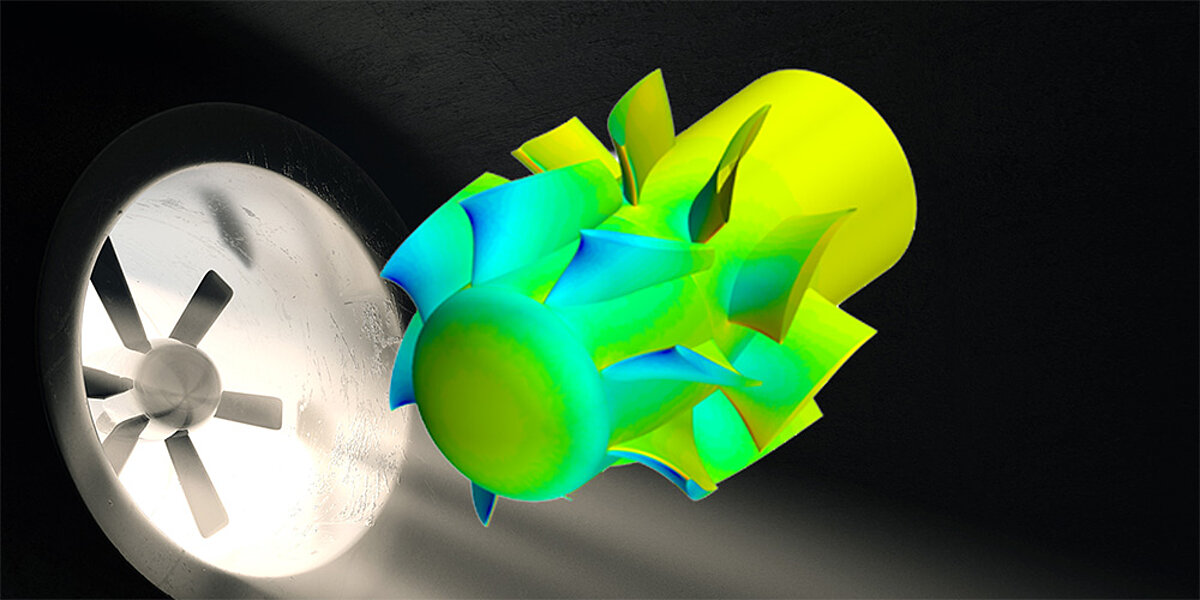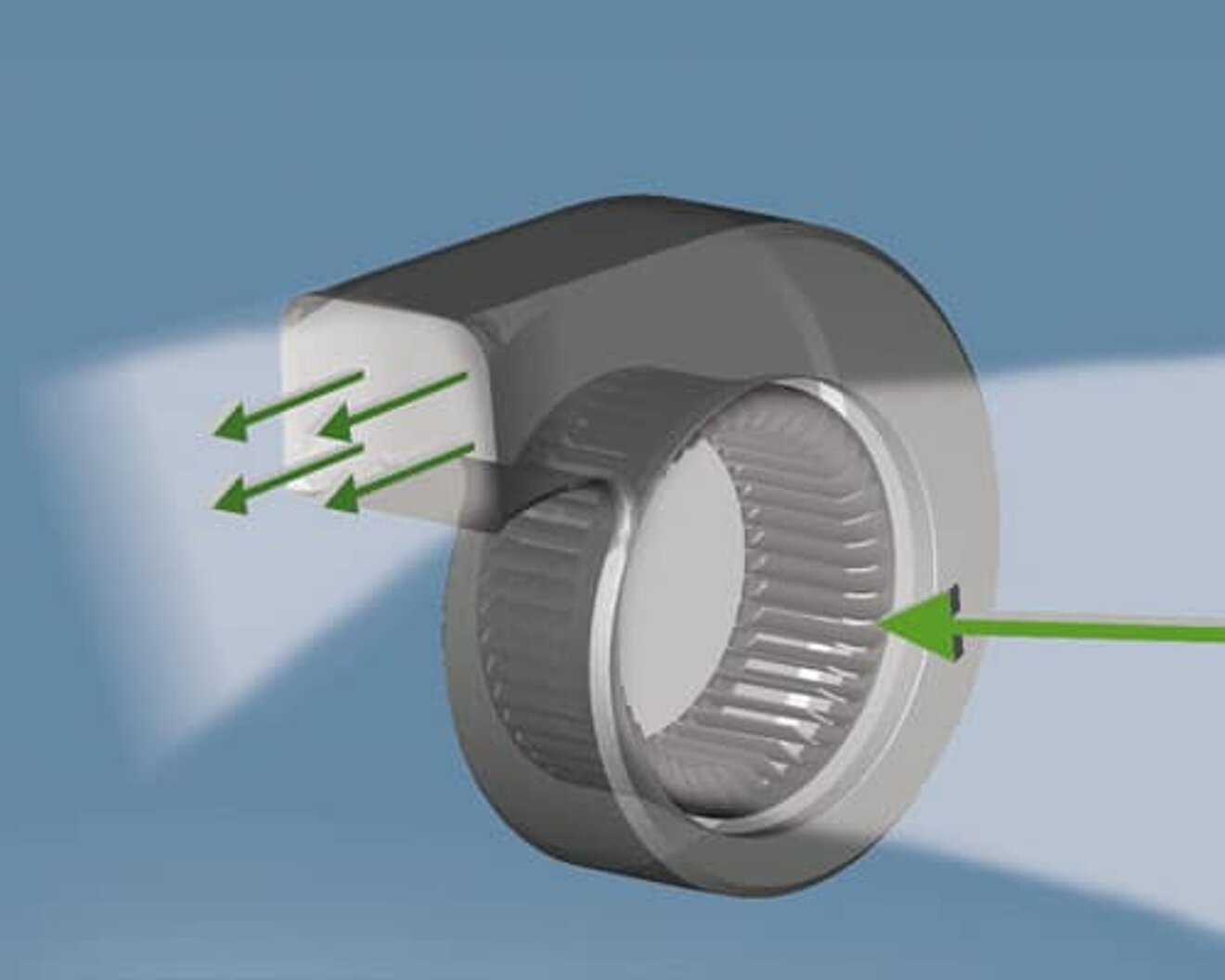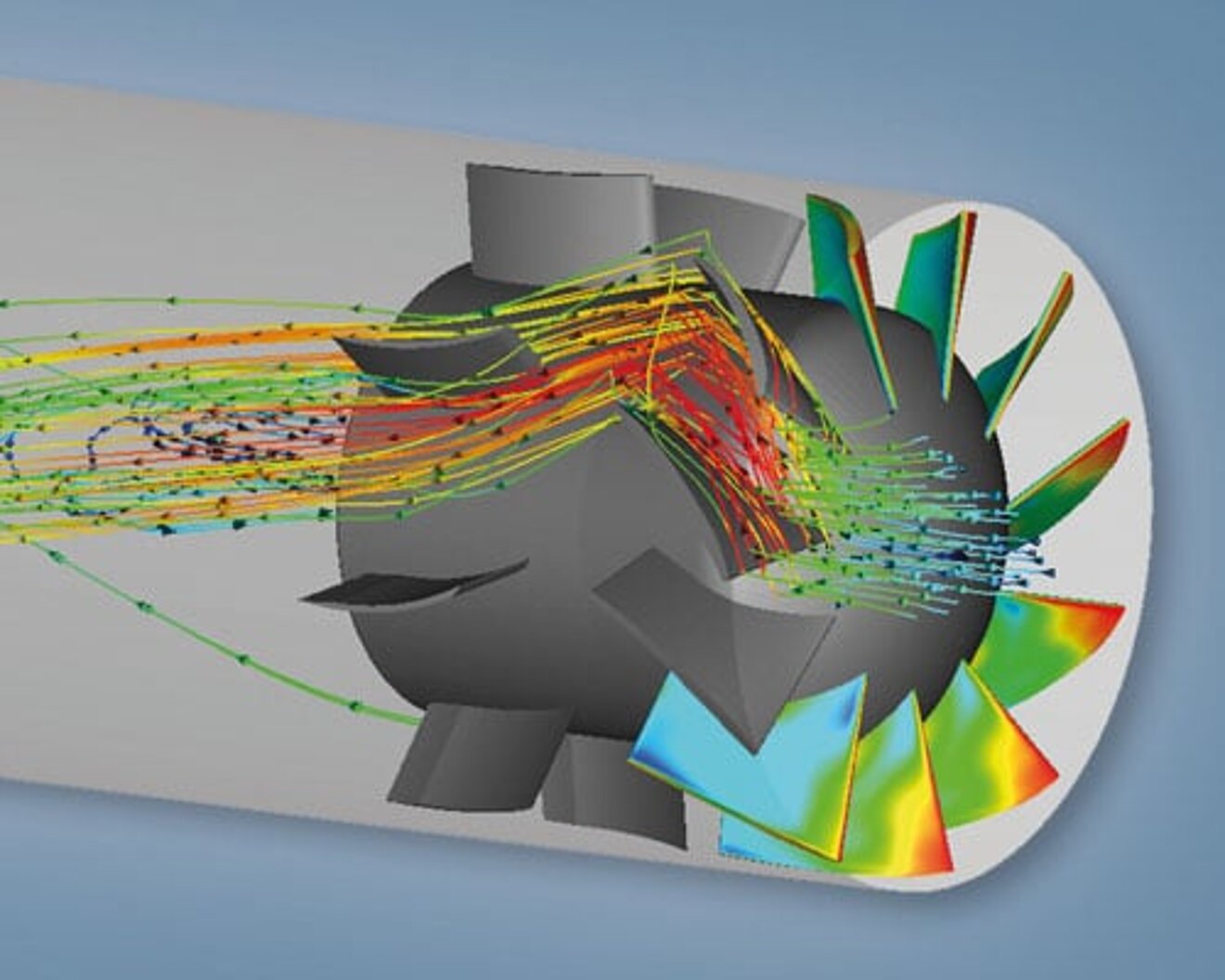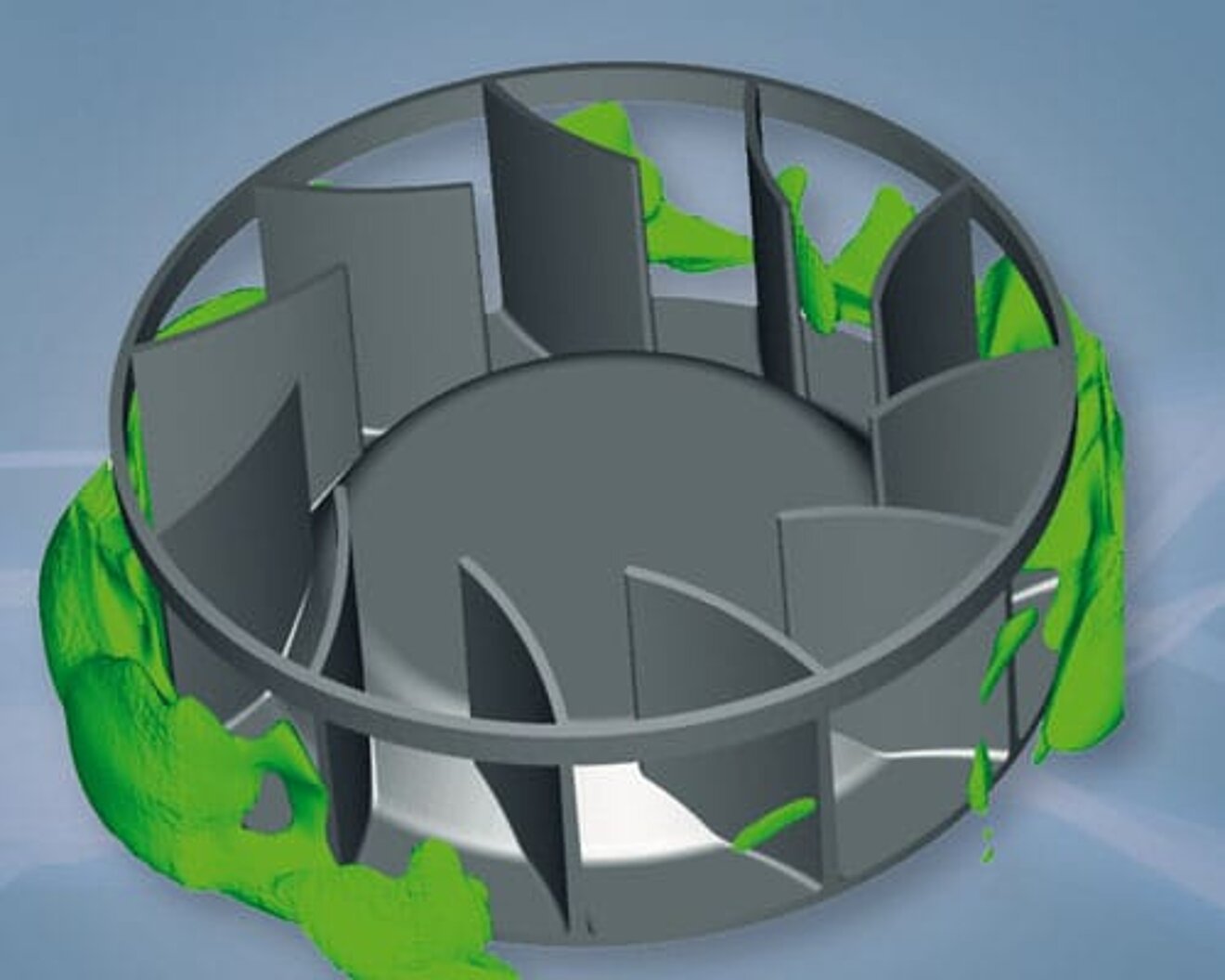Fans and blowers


Introduction
Fans are used to transport air. One speaks of a fan when the pressure ratio between the outlet and inlet is less than 1.1. At pressure ratios of 1.1 to 3, one speaks of blowers, while at higher pressure ratios one speaks of compressors, which are considered elsewhere.
In the case of fans, the compression of the air hardly plays a role, so the air hardly heats up.
Another distinction is whether the flow is axial or radial.
The efficiency should be as high as possible and the noise generation as low as possible.
Fortunately, both requirements go in the direction of an optimum incident flow of the blades. This can be made visible and optimized via flow simulation.
Task Strength
Depending on the level of speed, the strength of the blades or the blade connection or the impeller are considered. Especially with welded blades, the welds are often a critical area.
In the area of smoke extraction, smoke exhaust fans must also endure elevated temperatures. This can also be taken into account in the strength assessment.
The area of strength also includes protection against resonance or vibration of blades, the entire impeller or even the complete fan.
For special impellers such as tangential fans, it is also possible to determine the limiting speed when the blades buckle. This is a classic stability problem.
Task flow
In addition to the strength properties, the fluid mechanical behavior also plays a role. Of particular interest is the behavior between volume flow and back pressure at different speeds, the so-called characteristic curve. The flow simulation shows what the actual condition is and where the casing or impeller geometry can be optimized. The characteristic curve can be determined numerically by running at different speeds. Zones with greater losses, vortex formation or incorrectly flowed blades can be specifically optimized.
If high volumes are involved, the cost of automated optimization can be worthwhile even for small improvements in efficiency. Here we use tools that vary and automatically optimize the geometry of the impeller and / or the housing.
The rotation of the impeller can be considered either by so-called MFR (Multiple Frame of Reference) methods or by moving grids. With moving grids, intermediate states of the impeller and the transient behavior can also be considered.
However, the computation times required for this are still very high. The acoustic behavior also plays a role in particular for fans in the automotive sector or in IT.
Outlook
Automated optimization of the blades and the housing geometry using brute force methods is moving more and more into the economic field due to the increasingly available computing power.
There are also already computational approaches to optimize service life for wear caused by dust and particles.
With serrated blade edges, attempts are being made to build quieter impellers, and adjustable blades are often used to increase the volume flow range of fans, right up to reversing the direction, e.g. in jet fans for tunnel ventilation.
Keywords
- Detachment vortex
- Acoustic
- Axial fan
- Axial fan
- Fire fan
- Pressure
- Fan
- Characteristic
- Impeller
- Impeller
- Guide vane
- Guide vane
- Tangential fan
- Radial fan
- Radial fan
- Rotor
- Blade
- Blade separation
- Blade inflow
- Vibration
- Stator
- Compressor
- Volume flow
- Efficiency




